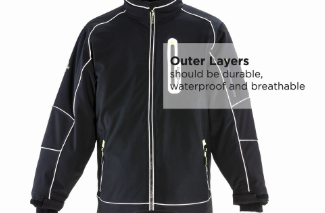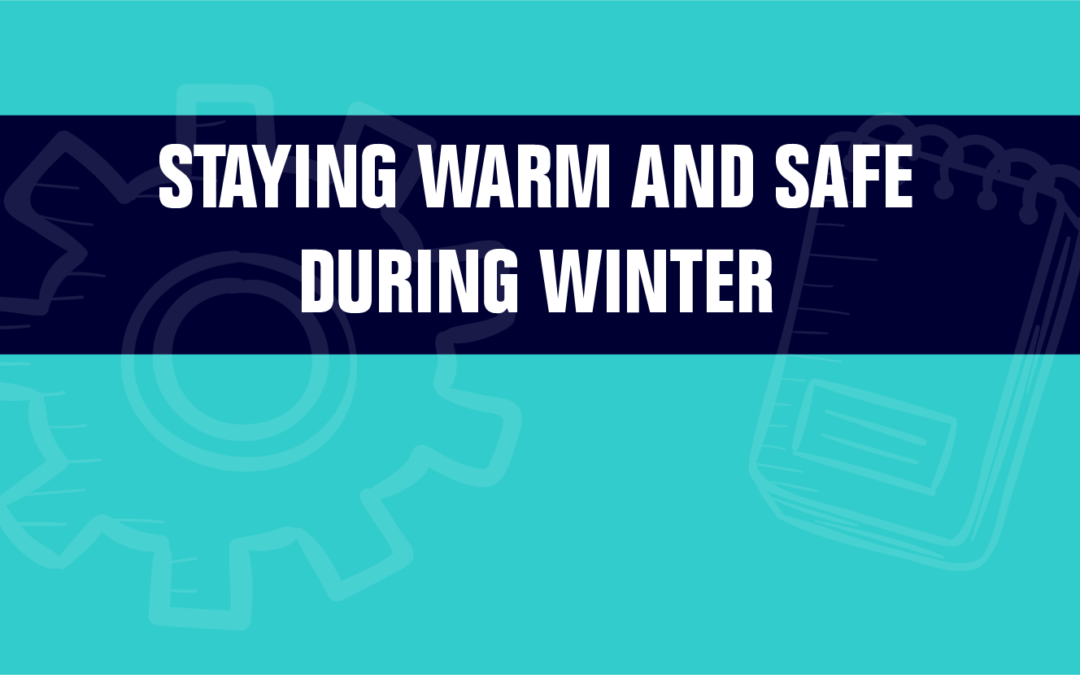Although winter is filled with festive holiday occasions, it can also be cold to a point of cruelty. You don’t need a big, heavy, puffy coat to stay warm and toasty though. Here’s how to layer up for comfortable, effective warmth.
Layers
Always dress in layers (and bring layers with you). Not only do layers create more pockets of air (which help insulate), but also allow you to avoiding sweating (which will cool you off the fastest). This also goes for your legs. It might not be sexy, but long underwear or tights underneath your pants will make an enormous difference. High end winter gear creates this by design (down/fur), try to mimic this functionality with your layers.
Generally you will have three:
1. Base-layer. (thermals/long underwear). Merino wool is go to here, but there are many high-performing synthetics should you find it too pricey. This layer should be quite tight and extremely soft/comfortable, and breathable. It also needs to maintain warmth when wet because this is the one that’s going to get sweaty (which is bad, but prepare for it anyway). Semi-related tip: make sure that the combination of your socks/thermals doesn’t cut into your skin (you often see this with ski and hiking boots). If you have high quality socks, consider getting thermals that only go down to mid-calf.

2. Mid-layer. On super cold days this can actually be two layers. A breathable fleece/synthetic sweatshirt type layer and an insulation layer (which is not really breathable). The insulation layer will almost always be some form of down (and will be integrated into heavy parkas). For this layer I’m really loving the new “synthetic down”. It’s so light and squishy and easy to store when you need to (which is awesome, because this is likely the first layer that you’ll want to store).

3. The wind/waterproof layer. (AKA, miserable weather layer… OK it’s actually called the “outer layer” or “shell”. This is where you’ll spend the big bucks, but in a pinch, a plastic bag is better than nothing. This layer is stopping windchill and rain only. And often, you’ll keep the lighter mid-layer + this one after you get halfway down your run. Or to work. Or whatever.

Loose
Do not restrict your circulation. Especially on your appendages (feet/fingers). Yes, that extra pair of socks might seem like a great idea, but if you have to squish into your boots, I promise that your feet will be colder. Same goes for gloves (mitts are usually better for that reason).
Cotton is the worst.
Jeans, shirts, dress pants whatever. If it isn’t wool or synthetic, it will get wet, stay wet, and provide very little insulation even when dry and zero protection from the wind.
Behavior
1. Protect yourself from the wind. Yes, cover your ears/face/exposed skin with clothing (hat/scarf/mitts), but also stand in whatever shelter available and walk next to buildings to avoid the wind. It’s a myth that you lose more heat from your head than any other body part… but that doesn’t mean that you shouldn’t cover it like you would any other body part. You don’t need to cover all your extremities, just the ones you want to keep.
2. Make the most of the heat you have. Get dressed inside and wait for all the little pockets of air to warm up before you go outside.
3. Do not get wet. Either from sweat or anything else. Getting wet will give you hypothermia/frostbite in minutes vs hours. If you feel yourself starting to sweat, immediately take off a layer… Or two. Whatever it takes. If it’s slushy you’re usually better off with $20 boots and a good pair of socks, rather than non-waterproof boots.
Sweating is caused by two things:
- The breathability of the fabric(s) you’re wearing. This can be rectified largely by spending more money on slightly looser/physically lighter, more insulating, items that wick away moisture. And yes, it is possible to get breathable waterproof winter boots if you spend enough money. And do not cheap out on your socks either. Try cheap alternatives first, but the technology is there if you need an “extreme” solution.
- You aren’t removing (or wearing) your layers appropriately. In order to stay warm your toes, fingers and arms should all be able to move/rest freely and comfortably. If that movement is hampered (say you can’t reach in front of you or over your head), likely you have the wrong clothing on. When you step outside you should feel a slight chill that goes away when you start moving. Once you get moving, it’s very normal to only have your wind/waterproof shell and your long underwear on… And there have definitely been times where I skied in long underwear and snowpants and removed my coat completely.
Dangers
Frostbite
- Stages: Lethargy in your joints, pain, and numbness. And you’ll notice some freaky color changes. Pain is good… Numbness is not…. but likely you’ll have a tough time noticing which parts are numb and which just hurt. If you start feeling pain, you should do something about it. If you see blue, there is likely some tissue damage. You need to get out of the cold immediately.
- Treatment: Understand that while you feel pain, the surface area of your skin is completely numb. You will have no reliable feedback as to what is actually hurting you. You can try rubbing the area, but you will not be able to tell if you’re damaging the skin. You can try to warm it up with water, but you likely will not be able to tell what temperature the water is. It is very easy to burn or damage your skin further while it is in the early stages of frostbite and are trying to warm up. And it will hurt a lot. Just be patient and wait.
Hypothermia
Understand that most cases of hypothermia happen without and snow or frost (because people are not prepared). Pouring rain at 45°F/8°C can be just as deadly.
Recognize the Symptoms:
- The shivering/teeth chattering stops.
- You start to feel sluggish/slow.
- It’s hard to think (you almost feel drunk).
- And then you feel very very sleepy and not really cold at all…
Treatment: Obviously, get out of the cold and get warm. If this isn’t immediately easily available, do the following:
- Get dry (change your clothes and try to dry the wet ones)
- Get out of the wind (build a shelter, crawl under to the base of a tree) and the elements
- Find a source of heat (even a candle in a small shelter [or your car!] can make a huge difference). Do not leave your car running (because you won’t notice if your exhaust becomes blocked and starts filling your car up with carbon monoxide).
Emergency Preparedness
First and foremost: Always tell people where you are going –your anticipated route– and when you’ll arrive. Obviously unnecessary in busy city centers, but for those commuting long distances or taking trips over winter, this is a good [lifesaving] habit to get into.
Keep this *minimal* emergency kit in your car at all times and all seasons:
-
Windproof/insulated gloves + hat
-
Rain ponchos
-
Plastic bags/garbage bags (they are windproof and decent for keeping your feet and core dry in a pinch)
-
Emergency blanket (and sleeping bag if possible)
-
Candle + matches/means to light it
-
Reflective cones (and glowsticks or flares if possible)
-
Multi-tool (leatherman)
-
First aid kit
-
Energy bars
-
An accurate paper map of the area
-
A tow rope
-
Salt or sand or kitty litter
And when the worst happens, understand that not all survival/emergency situations are created equal.
-
It may or may not be safest to stay in your vehicle. Generally speaking, you will survive the elements longer if you wait in your car…
-
But if your car is anywhere near a major highway, you’re also more likely to get hit…
-
But even then it’s still safer to get hit while in your vehicle, rather than crossing the road on foot.

Thanks for such great information…can’t wait to be on the BEACH!
Glad this was helpful!